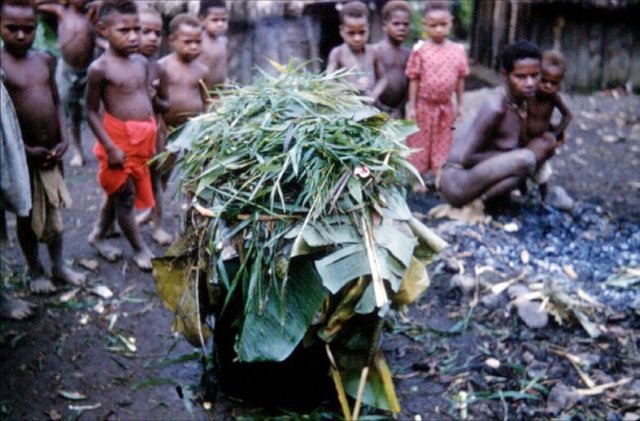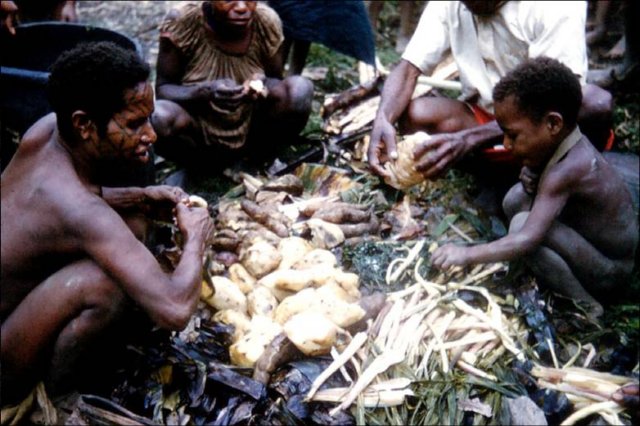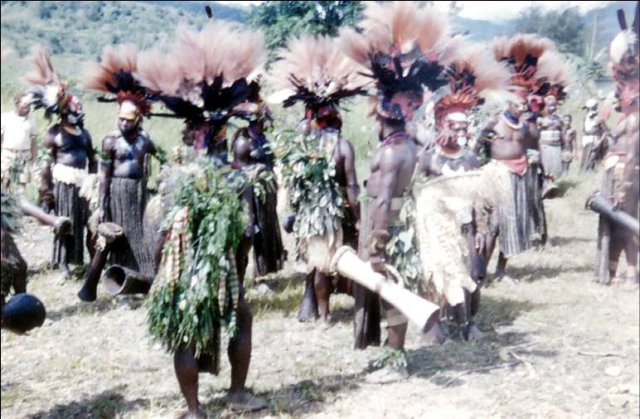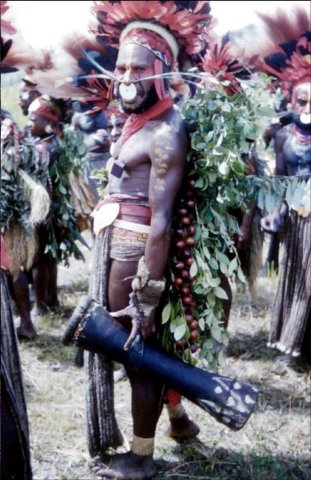Chimbu Pig Festival 1961 – Photos from David Craig
Various photographs of a pig killing “sing sing” that David wanted to share.

Once the date was decided pigs, goats and some cassowaries were collected and fattened. It could take two years until all was ready.

The host village had to prepare big gardens and build guest houses large enough to accommodate all the visitors.

As the day of the festival drew nearer people dressed in their finery as this was a very special occasion. The headdresses were magnificent.

Many families were in attendance and some displayed a great deal of wealth as represented by their headdresses.

The lad, from the local technical school, represented change whilst the lass from the village was still very traditional.

As soon as the killing started all was bedlam. Pigs squealed, dogs barked , men shouted and children laughed in delight.
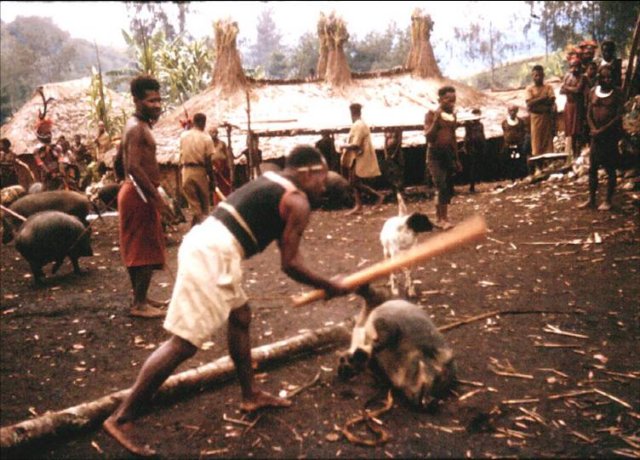
Men used specially made cudgels to bludgeon the pigs. Some dropped on the first blow whilst others had to be hit repeatedly.
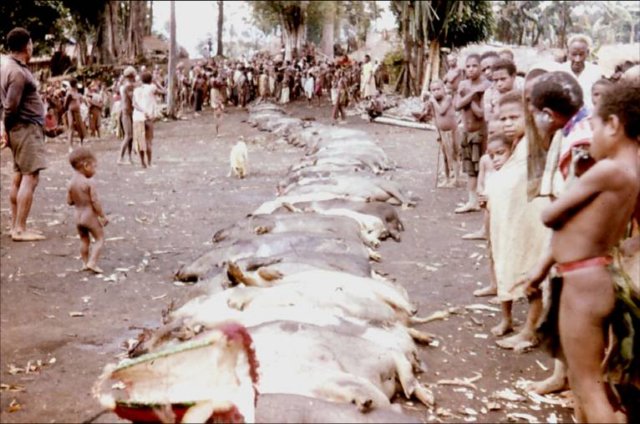
Once the killing has ceased the pigs were lined up so that everyone could see how many were killed and how fat they were.
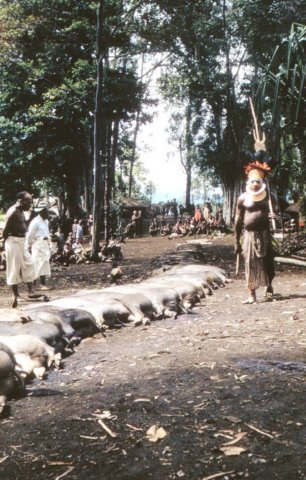
The ‘town crier’ then told the congregated people that his village was paying back the debt from the last pig festival. He also boasted about the quality of the pigs and told people that they were bigger and fatter than their neighbours gave them last time

The pigs were then distributed to the family groups. These groups had been indicated at meetings in previous weeks. Quietness reigned for a short time at this stage.

Once the distribution was complete fires were lit. Pigs were thrown on the fires so that the hairs could be singed. The heat of the fire caused the pigs to swell. The noise level again rose with excitement.
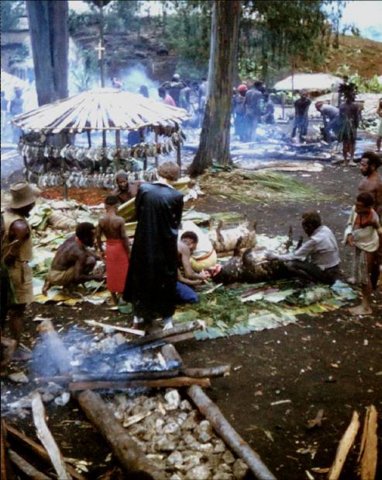
The lower jaws of the pigs killed at the last pig festival were displayed in the ‘bolum’ house . This not only showed people the quantity killed but it was also regarded as a spirit house. This one shows that the local missionaries had given tacit approval of the festival.
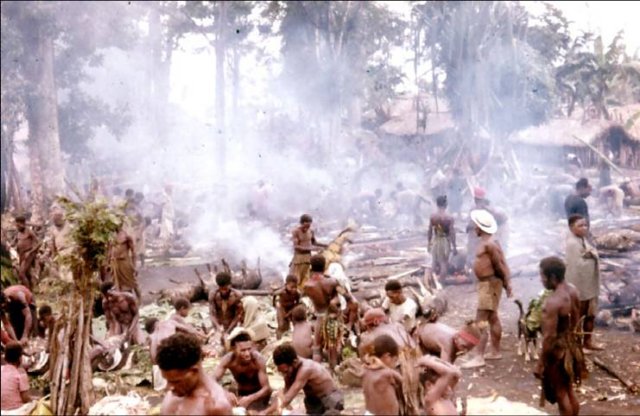
The whole area now became one of feverish activity. Smoke billowed and the smell of burning pig became dominant.
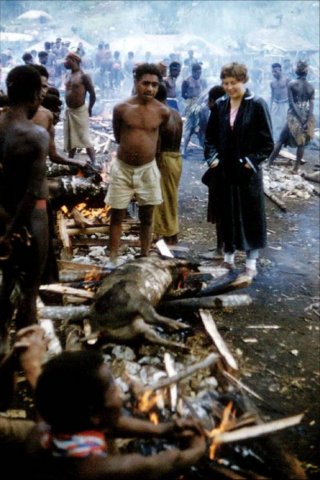
The fires not only singed the pigs but also heated the myriads of stones that had been collected. These would be used later to help cook the vegetables and the pigs after they had been butchered in a ritual way.
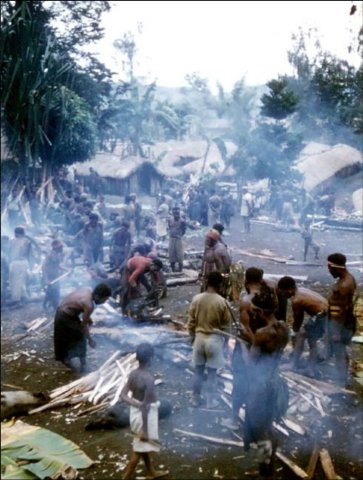
A very large area of the village was devoted to preparing the pigs and cooking them. During the months preceding the festival a great deal of fire wood had been collected and prepared.
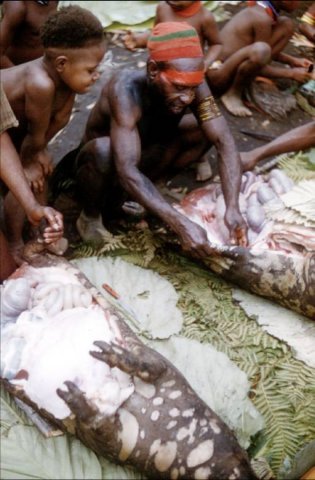
The butchering was done in a ritual way and according to firm custom and could take several hours. Bamboo knifes were used rather than steel knives. The young looked on with great anticipation.
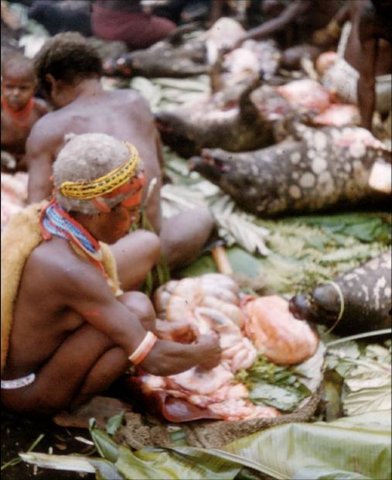
Banana leaves were used to keep the pigs out of the dirt. The butchering was very important and great care was taken to separate the individual parts. Nearly every part of the pig was used.
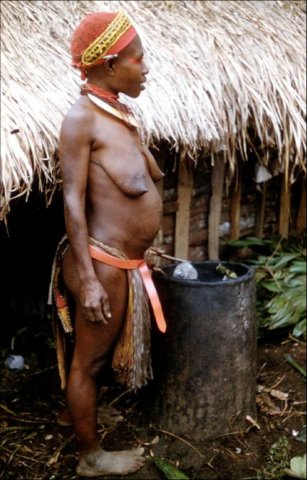
Some vegetables were cooked in hollow logs. Hot stones were put in the log with the vegetables to provide the heat for cooking.






